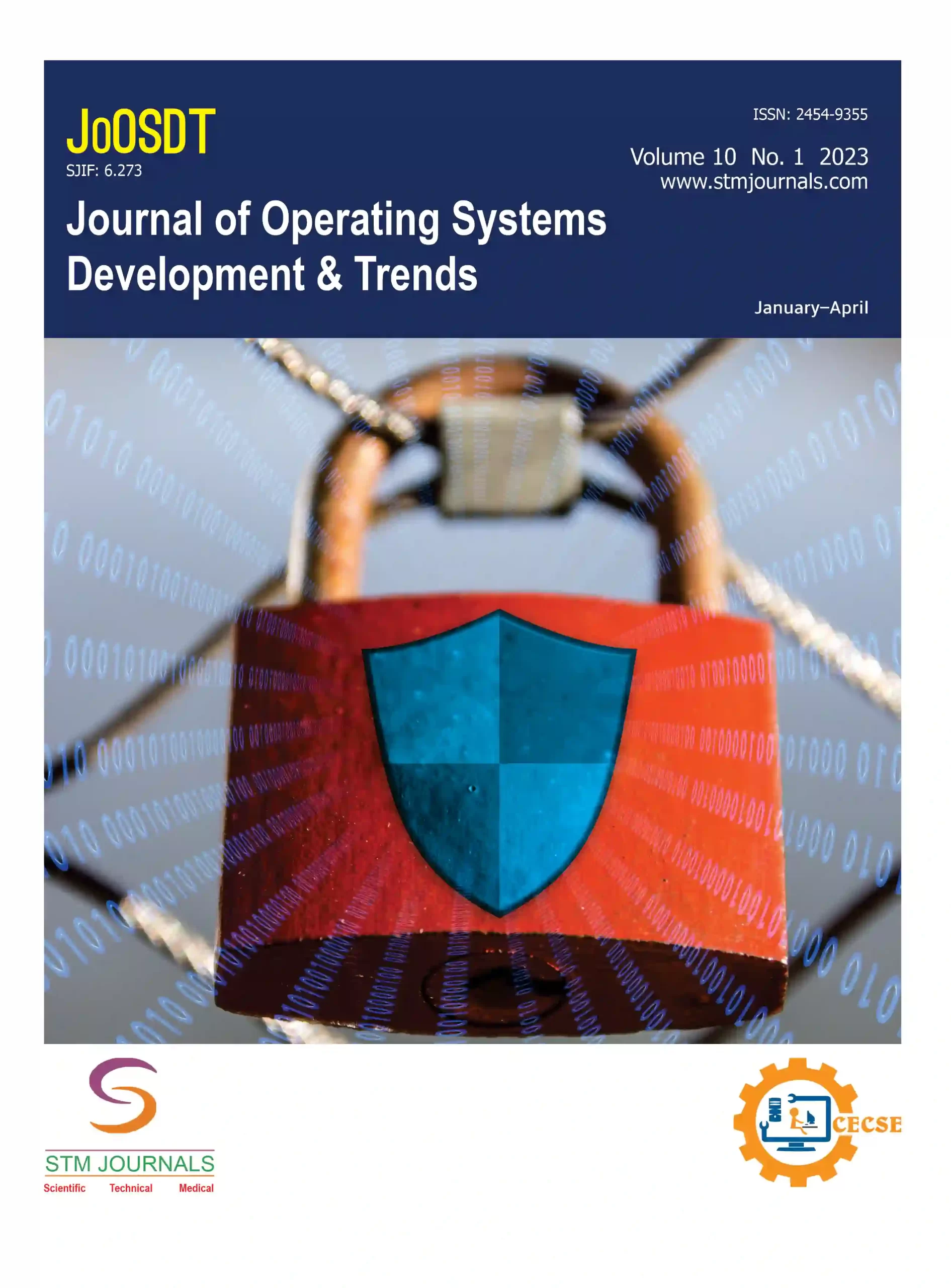[{“box”:0,”content”:”[if 992 equals=”Open Access”]n
n
Open Access
nn
n
n[/if 992]n
n
n
n
n

n
Sai Mani Swaroop Sharma Rampa
n
- n t
n
n
n[/foreach]
n
n[if 2099 not_equal=”Yes”]n
- [foreach 286] [if 1175 not_equal=””]n t
- Data Engineer Associate, Miracle Software Systems, Andhra Pradesh, India
n[/if 1175][/foreach]
n[/if 2099][if 2099 equals=”Yes”][/if 2099]n
Abstract
nThis journal explores the fundamental ideas, features, and various applications of operating systems (OS), offering an in-depth look at this interesting field. It gives a clear picture of the operating system (OS) acting as the invisible conductor, arranging the complex symphony of memory, hardware, and apps that drive our digital world. The described roles encompass resource management, process management, memory management, file management, device management, security management, and user interface management, which are essential functions of an operating system (OS). An exploration of many operating systems reveals the diverse participants in this virtual orchestra, encompassing wellknown brands such as Microsoft Windows, Apple macOS, Linux, Android, and iOS. Every system has its own advantages and meets a different set of requirements, illustrating the wide range of operating system choices. The journal looks ahead, analyzing major themes influencing operating systems’ development. These themes include the growing importance of mobile and cloud computing, security issues, and the possible incorporation of artificial intelligence. The final thoughts highlight how important operating systems are to the seamless operation of the digital world. We can better appreciate their importance and their ability to influence how we interact with technology when we comprehend their guiding principles and operational mechanisms. This abstract is a brief synopsis of the journal, emphasizing its main ideas and giving readers a sneak peek at the operating systems research that goes on inside.
n
Keywords: Operating System (OS), Digital World, Software, Hardware, Orchestration, Evolution, Trends, Resource Management, Process Management, Memory Management, File Management, Device Management, Security Management, User Interface (UI) Management, Conductor Analogy Diversity of OS (Windows, mac OS, Linux, Android, iOS), Cloud Computing, Mobile Computing, Artificial Intelligence (AI), User Experience (UX), Security Threats, Virtualization.
n[if 424 equals=”Regular Issue”][This article belongs to Journal of Operating Systems Development & Trends(joosdt)]
n
n
n
n
n
nn
nn[if 992 equals=”Open Access”] Full Text PDF Download[/if 992]
[if 379 not_equal=””]nBrowse Figures
n
n
n[/if 379]n
References
n[if 1104 equals=””]n
1. Silberschatz A, Galvin PB, Gagne G. Operating System Concepts, 10e Abridged Print Companion. John Wiley & Sons; 2018 Jan 11.
2. Russinovich, Mark, David Solomon, and Alex Ionescu. Windows Internals. Microsoft Press, 2017.
3. Love, Peter. The Linux Kernel Module Programming Guide. Pearson Education, 2010.
4. Arpaci-Dusseau, Remzi H., and Andrea C. Arpaci-Dusseau. Operating Systems: Three Easy Pieces. Arpaci-Dusseau Books, 2014.
5. Zuckerberg, Mark. “The Future of Computing.” Facebook, 2018, https://www.theverge.com/a/mark-zuckerberg-future-of-facebook.
6. Bell, Genevieve. Invisible Computers: The Story of the OS that Makes the Modern World Run. Princeton University Press, 2021.
7. Arpaci-Dusseau, Remzi H., and Andrea C. Arpaci-Dusseau. Operating Systems: Three Easy Pieces. Arpaci-Dusseau Books, 2014.
8. Bach, Maurice J. The Design of the UNIX Operating System. Pearson Education, 1986.
9. Bate, Christopher. Android System Programming. O’Reilly Media, Inc., 2014.
10. Carey, Godfrey, and Patrick Cullen. Operating System Security. Addison-Wesley Longman, 2009.
11. Randell, Brian, Jean-Claude Laprie, and Michel Lambert. Reliability: Engineering for Fault Tolerance. Springer-Verlag Berlin Heidelberg, 1995.
12. Ceruzzi, Paul E.A History of Modern Computing. MIT Press, 2003.
13. National Academies Press. The Next Wave of Computing: Opportunities and Challenges. National Academies Press, 2019.
nn[/if 1104][if 1104 not_equal=””]n
- [foreach 1102]n t
- [if 1106 equals=””], [/if 1106][if 1106 not_equal=””],[/if 1106]
n[/foreach]
n[/if 1104]
nn
nn[if 1114 equals=”Yes”]n
n[/if 1114]
n
n

n
Journal of Operating Systems Development & Trends
n
n
n
n
n
n
| Volume | 11 | |
| [if 424 equals=”Regular Issue”]Issue[/if 424][if 424 equals=”Special Issue”]Special Issue[/if 424] [if 424 equals=”Conference”][/if 424] | 01 | |
| Received | February 29, 2024 | |
| Accepted | March 22, 2024 | |
| Published | May 7, 2024 |
n
n
n
n
n
n function myFunction2() {n var x = document.getElementById(“browsefigure”);n if (x.style.display === “block”) {n x.style.display = “none”;n }n else { x.style.display = “Block”; }n }n document.querySelector(“.prevBtn”).addEventListener(“click”, () => {n changeSlides(-1);n });n document.querySelector(“.nextBtn”).addEventListener(“click”, () => {n changeSlides(1);n });n var slideIndex = 1;n showSlides(slideIndex);n function changeSlides(n) {n showSlides((slideIndex += n));n }n function currentSlide(n) {n showSlides((slideIndex = n));n }n function showSlides(n) {n var i;n var slides = document.getElementsByClassName(“Slide”);n var dots = document.getElementsByClassName(“Navdot”);n if (n > slides.length) { slideIndex = 1; }n if (n (item.style.display = “none”));n Array.from(dots).forEach(n item => (item.className = item.className.replace(” selected”, “”))n );n slides[slideIndex – 1].style.display = “block”;n dots[slideIndex – 1].className += ” selected”;n }n”}]

